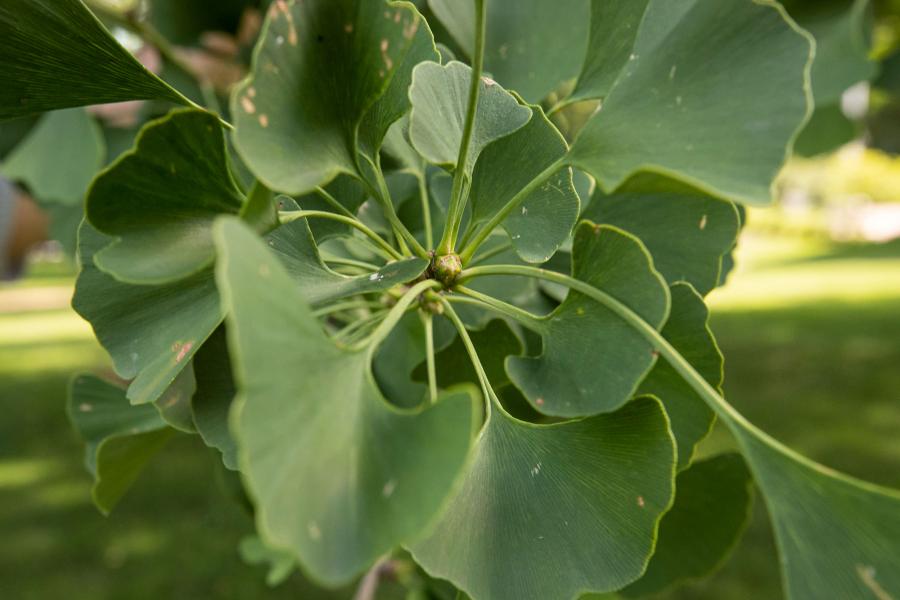Hughes was also involved with the South Lawn Project, including the somber but creative interpretation of the Kitty Foster home site and cemetery, designed by Walter Hood. She helped guide the design of the Ivy Corridor development, currently under construction, from its inception, and managed some 10 years of summer student Cultural Landscape Survey internships.
Hughes included landscape in discussions on the architecture of the Grounds, according to Nancy Takahashi, associate professor emerita of landscape architecture in the School of Architecture.
“Before Mary arrived to the Office of the University Architect, the discourse of the UVA Grounds focused primarily on its buildings,” Takahashi said. “Through her mindset and values as a landscape architect, Mary worked to elevate the role of the landscape as equal to the buildings. She amassed an unmatched knowledge of the Grounds through her own personal research, directing student interns and through the many landscape consultant studies her office oversaw.
“She created the first in-depth narrative of how the Grounds evolved beyond the Academical Village in the context of changing times and culture. That scholarship has been incredibly important and foundational in thinking about how the Lawn and the greater Grounds should evolve now and in the future, as UVA embraces goals for a sustainable and socially just campus in such a historic context.
“Many of us in the Architecture School have been beneficiaries of the presentations about the UVA campus that she is often called upon to give,” Takahashi said. “As a member of the Arboretum and Landscape Committee, over the years I’ve been appreciative of the informed background she provides for the projects under consideration. In her tenure, Mary has impacted every aspect of the Grounds for students, the greater community and visitors to enjoy, and she leaves a design legacy of rigor, care and intellect.”
Julia Monteith, an associate University planner in the Office of the Architect, said, “Mary is both visionary and pragmatic in her approach to projects and initiatives at UVA, and has consistently emphasized the importance of the landscape in the campus fabric we know as Grounds. She is a valued colleague and always brings something positive and pithy to the conversation, enlivening our discussions.”
Hughes participated in many large projects on Grounds, including the 2005 moving of Varsity Hall, one of the first infirmaries built for a college campus, designed with a unique air-handling system. The building was moved about 185 feet northeast to its current location to accommodate the construction of Robertson Hall at the McIntire School of Commerce.
“It was amazing that they could just do that, and I remember it had rained, so it was incredibly muddy the day they were trying to move it on rollers,” she said. “The Health System wanted it for a little bit, and they were going to move it down into the Lane Avenue area, but we would have had to take all of the overhead wires down in order to get it down there. That proved infeasible, so we ended up moving it a few yards.”
While Thomas Jefferson’s original Academical Village is listed as a UNESCO World Heritage Site, the rest of Grounds also has a historical context.
“Another project that nobody knows about, but is very gratifying to me, is that we got a Getty [Foundation] grant when they were doing their college and university preservation programs to do a historic preservation framework plan for the University of Virginia, writ large,” Hughes said. “Up until that point, the Academical Village was the sole focus of UVA’s preservation program. [Former architect for the historic buildings and Grounds] Murray Howard’s old position was called ‘Curator of the Academical Village,’ so it was completely focused on the Jefferson buildings. But we have McKim Mead and White buildings; we have lots of historic buildings that weren’t recognized as being historic because they weren’t designed by Jefferson.
“This preservation framework plan evaluated all the buildings and landscapes at the University of Virginia that were 40 years old or older and evaluated their significance and integrity,” she said. “It articulated the history of UVA extended past the death of Jefferson, and to many others who were important. It really expanded what was regarded as historic at the University. It is not something that anybody but preservation people know exists, but I think it is a really important milestone and will be … a guide to stewardship decisions that are being made in the future.”
While her work involved the entire Grounds, Hughes has her special places.
“I love the pavilion gardens,” she said. “I also love the old cemetery, walking through there – I love the headstones. There is a lot of history, especially in the oldest part of the cemetery.”
Despite the projects still pending, Hughes said it is time to move on.
“My husband retired last year, and I probably would have retired before this if it hadn’t been for COVID slowing everything down,” she said. “I felt like I was involved in projects that unfortunately I am still going to be leaving unfinished, but I guess it is impossible to wrap everything into neat little bows.”
All in all, getting into landscape architecture was a great choice, she said.
“I never could have anticipated all the avenues it would lead me down,” Hughes said. “One thing I love about it as a profession is that it covers such a wide array of issues that one is never bored. Having been in the private sector and having been in the public sector, I like working in the public sector. I love the feeling of connection I have to the place over time, and the stewardship role is very satisfying.”







